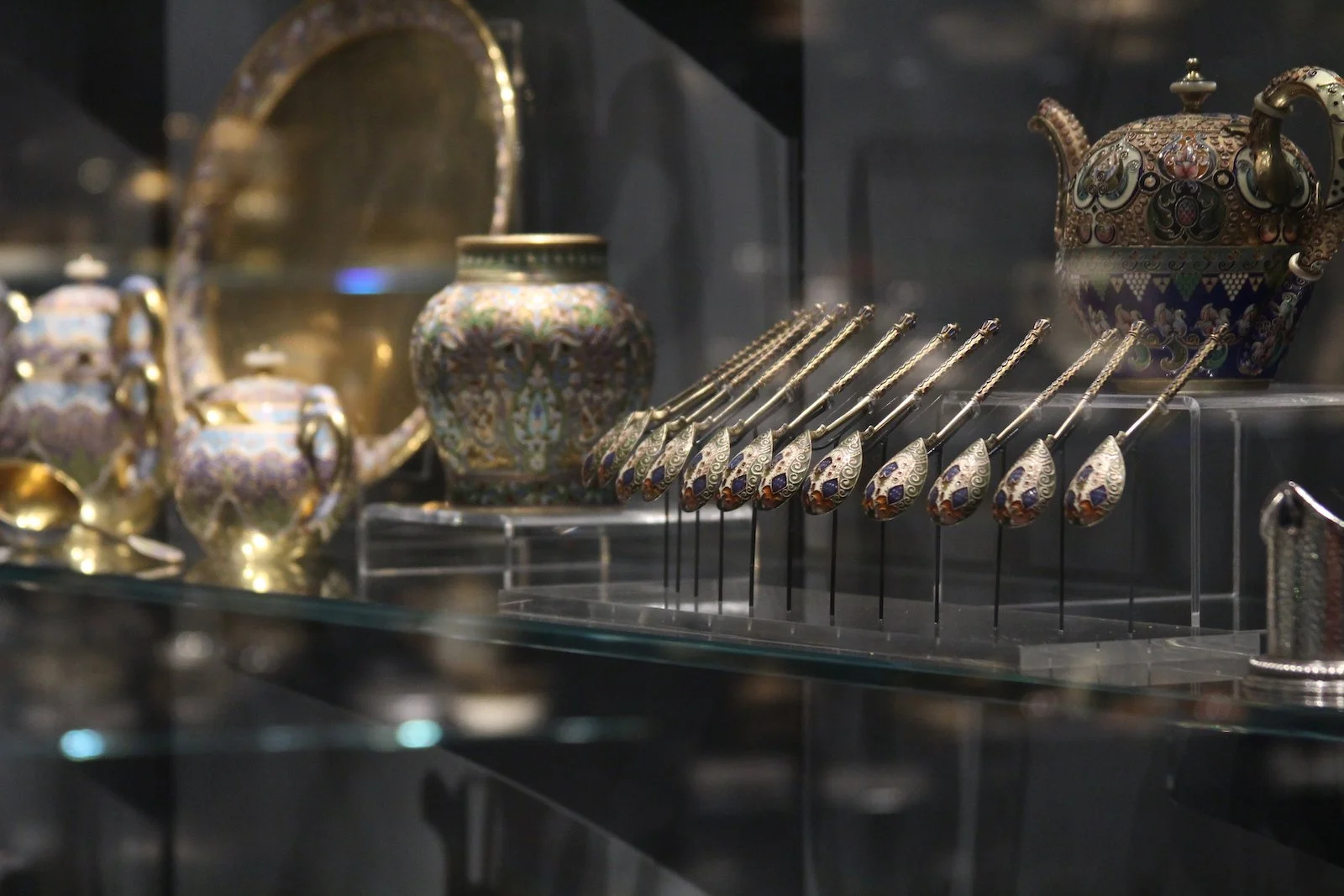
Gallery Design / Showcase Engineering /
Object Display / Mount Making /
Bespoke Furniture / Temporary Exhibitions
Dreambox Studio is a creative partnership of designers, engineers and makers with extensive experience working with curators, conservators and heads of collection on exhibitions of our cultural heritage.
What We Do…
-
Our capability in the design of museum galleries is supported by 25 years of working on store designs for major retail brands. There are clear similarities here, from the planning of object layouts, grouping of collections, to the impact of display furniture and a focus on the visitor’s journey through the space. From a delivery point of view they share the same process issues, where the fitting-out of an exhibition gallery is only one of many stages in the construction or renovation of an architectural environment. We work closely with curators to understand their objectives as we focus on the iterative development of schematic layouts for fixed display cases and set works. We issue layout drawings, attend construction site meetings to ensure the seamless integration of building services with the requirements of the showcase systems and liaise with the project team when there is misalignment. We stay as involved as long as is needed, always guarding our client’s vision, providing a continuity of service throughout.
-
Our expertise in the schematic design and technical engineering of museum-grade showcases has been gained from two points of view: from work with showcase manufacturers, and directly for museums and private collectors. We know that showcases represent a significant investment, and so it’s paramount that all requirements for a collection (conservation, security and display) are carefully evaluated and supported, without compromising aesthetic, technical or practical issues. Most museum-grade showcases are based on systemised component elements that form a range of case types, with options for bespoke dimensions, colour, access, lighting, shelving, climate control, locking systems and security glazing. We work closely with our clients to guide them through the design process and showcase selection, developing options and offering a clear point of view. And when a systemised approach to construction isn’t able to deliver what is needed, we have the technical expertise to engineer custom case solutions that can.
-
We invest time in evaluating our client’s needs, and assess the appropriateness of each display option: from easily-adjusted, cantilevered glass shelving for heavy objects, to suspended shelves on steel cables or rods, always looking to future-proof a museum’s need for versatility. Once we have surveyed the object collection, we design free-standing display furniture (blocks, pedestals and caption rails) in addition to custom-made object mounts. We also advise on the coordination of in-case lighting for displays, assessing the setting-out of adjustable downlights, colour temperature, beam angle, or the addition of light fittings that bring the light source closer to highlight an object.
-
Object mounts are crucial components for the preventative conservation of museum artefacts. Through initial discussions with our clients we assess and record the unique nature and condition of each object in order to develop designs for mounts that support, securely hold and display them, often elevating them to enhance visibility and appreciation. Our process involves an initial object survey in which we measure, weigh, photograph and sometimes digitally scan objects. With this information we enable 3D CAD modelling for the precise off-site engineering of mounts, without the need for further handling. In the fabrication of bespoke mounts, we can optionally use digital engineering technology, or employ the hand-crafted skills of the mount maker. In all cases the mount solutions we develop are made by our trusted partners who are experienced in fabricating components in acrylic, powder-coated steel and brass, in conjunction with a wide range of Oddy-tested materials.
-
Our background in cabinet making and contemporary furniture design underpins our belief that the design of bespoke display furniture can create a signature statement for a collection. It provides the opportunity to reflect the character of an exhibition’s venue, and to create an emotional touchpoint for visitors. This was our brief for Keats House, where we designed and built a conservation-grade hardwood writing desk with an all-glass, top hinged high-security laminated glass vitrine and concealed lock, to house the original ‘Ode to a Nightingale’ manuscript. In projects involving bespoke joinery, once a piece has been approved, we provide detailed technical information to control the quality of build, typically working with trusted partners who share our ethos and values.
-
Often fast-track and especially object-centred, the staging of a temporary exhibition involves all aspects of what we do, condensed into a short programme, with a fixed budget and a set opening date. Our role is to act as guide, giving our clients confidence in their decisions so that an exhibition truly fits its intended space. Our goal is to ensure that displays relate to their situation and that any aesthetic or practical obstructions are overcome with thoughtful solutions. In these projects the curator/conservator, graphic designer, exhibition designer and engineer work collaboratively, from wherever their bases are, exchanging ideas, clarifying details, and coordinating suppliers. Because speed and ease of communication are critical, it’s a very challenging and satisfying process, often leading to repeat work from the same client.
Our Projects…










